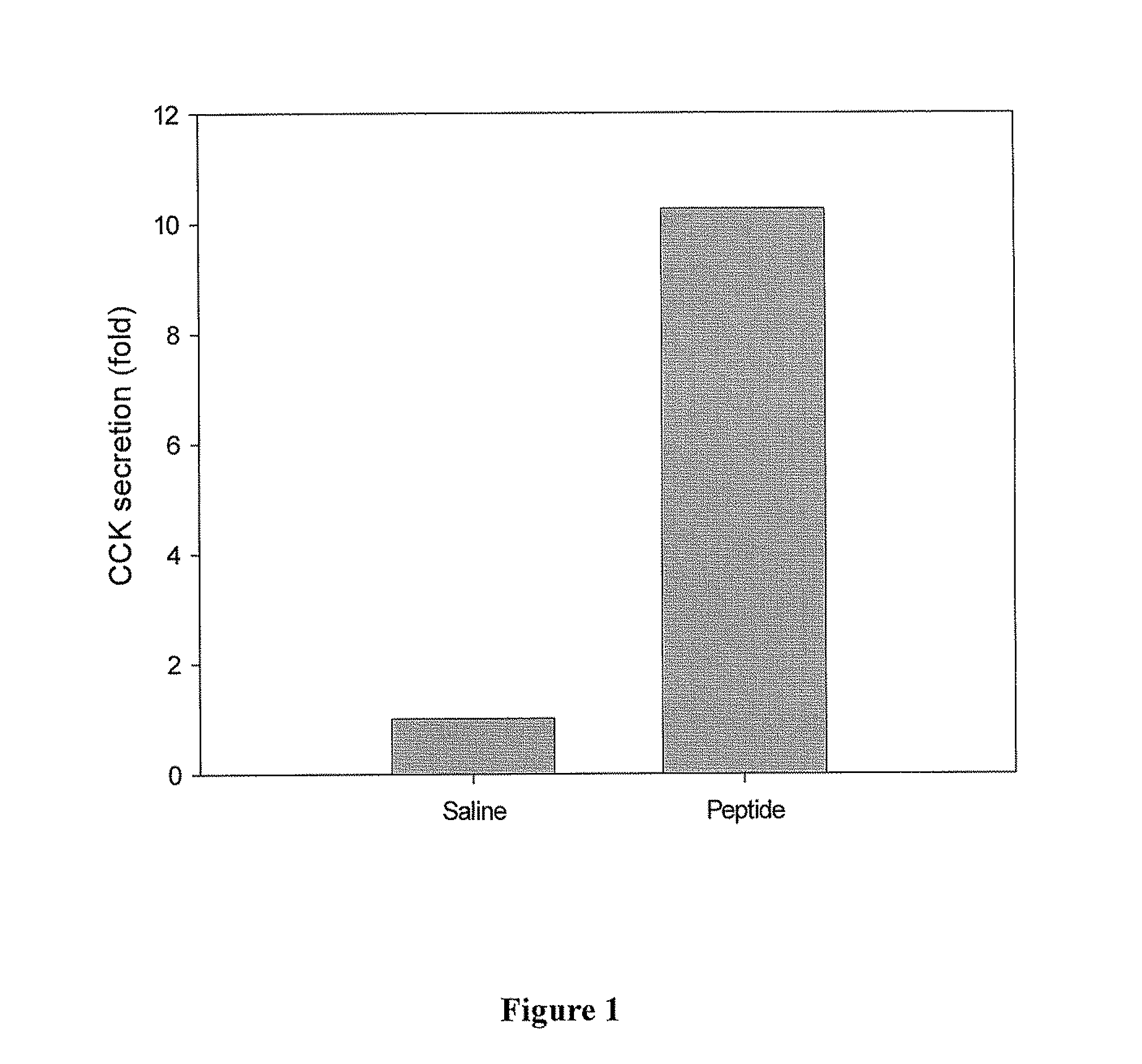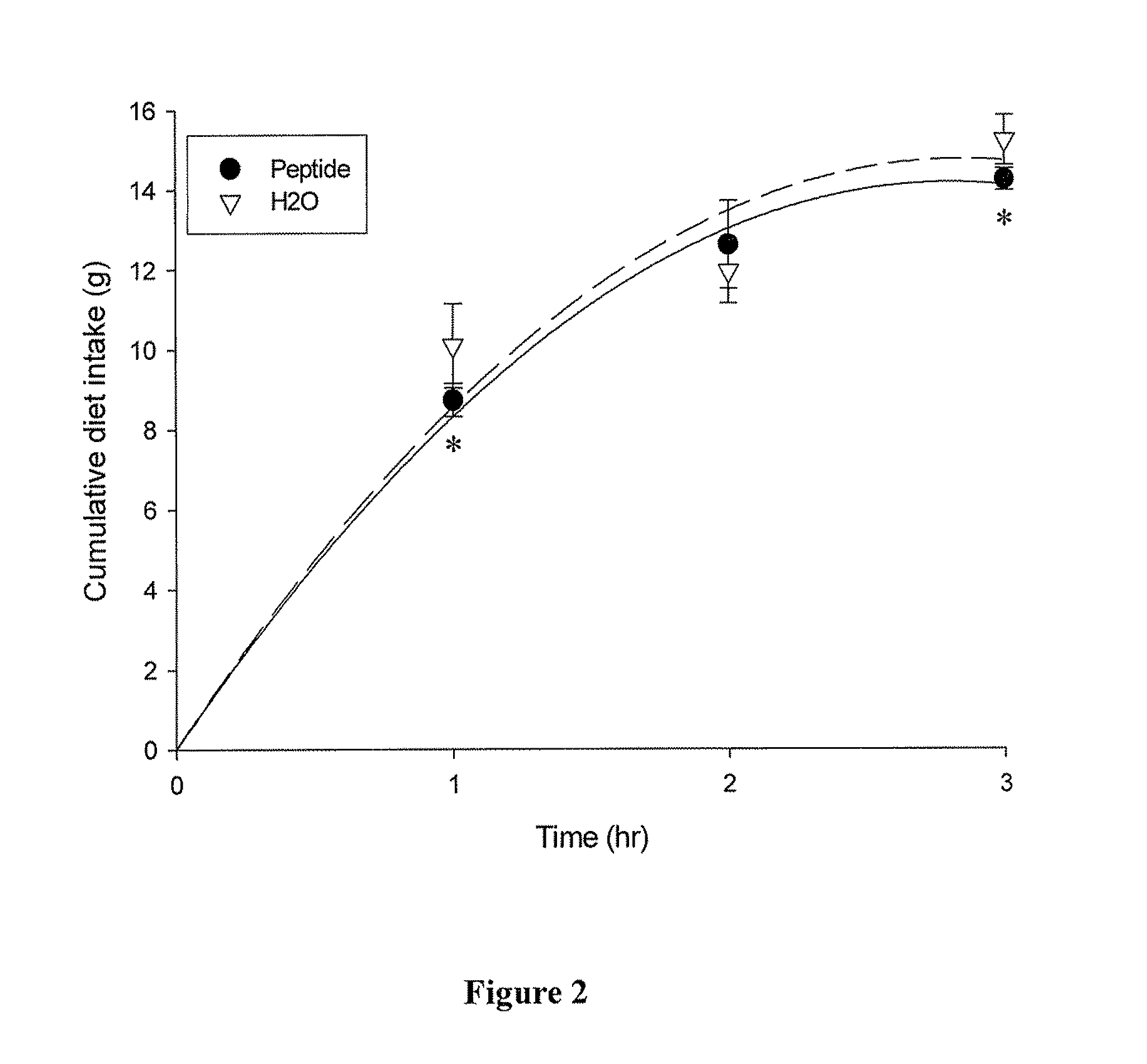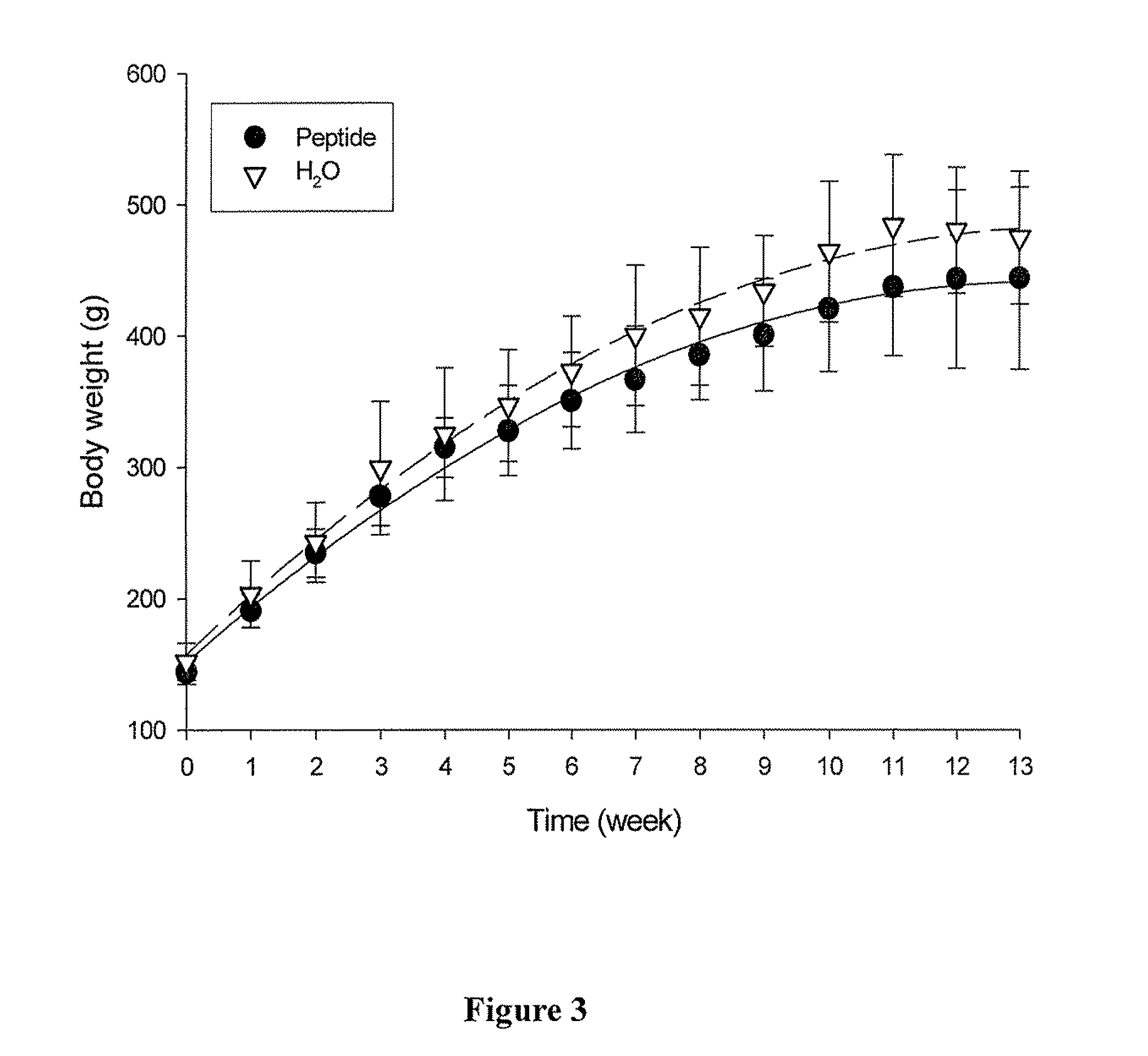Process for preparing peptide products for promoting cholecystokinin secretion and use of the peptide products
a technology of cholecystokinin and peptide products, which is applied in the field of new products, can solve the problems of more cost-ineffectiveness and obesity, and achieve the effects of promoting cholecystokinin secretion, reducing food intake, and increasing satiety
- Summary
- Abstract
- Description
- Claims
- Application Information
AI Technical Summary
Benefits of technology
Problems solved by technology
Method used
Image
Examples
example 1
Preparation of Soybean Residues
[0033]The soybean residues were wastes of the process of producing nutritional soybean peptides. First, 25 kg of defatted soybean powder (purchased from Central Union Oil Corp.) were mixed with water which was half the weight of the defatted soybean powder; the mixture was steamed with steam of 100° C. for 45 minutes and then cooled to 45° C. 4.2 g of koji (purchased from Higuchi Matsunosuke Shouten Co Ltd. Japan) containing Aspergillus sojae were added to the mixture and mixed, and the mixture was fermented under 27° C. and 95% relative humidity for 48 hours. After fermentation, water 3 times the weight of the fermented mixture was added to the mixture and the mixture was hydrolyzed at 45° C. for 8 hours. Then the hydrolysates containing mixture of solid and liquid were put into a filter press (purchased from Klinkau GmbH & Co.) by using a pump. Each chamber of the filter plates and frames contained a filter cloth with a pore size of 1,000 mesh. After...
example 2
Preparation of Powdered Satiety Peptides with Alcalase
[0034]Soybean residue prepared by the process of Example 1 was mixed with water which was 3 times the weight of the soybean residue. The pH of the mixture was adjusted to 9.0 and 24 A.U. (about 27,360 I.U.) of Alcalase (purchased from Novazyme) were added for every kilogram of soybean residue. The mixture was hydrolyzed at 50° C. for 2 hours. The hydrolysate was heated to 90° C. for 10 minutes to inactive the enzyme. The liquid was separated from the solid of the hydrolysates using the filter press described in Example 1. The liquid was then collected and concentrated to the concentration of 40 brix by using evaporator MT-3 purchased from Mao Tai Machinery Co., Ltd. Taiwan. Finally, the concentrated liquid was spray dried to yield the powdered satiety peptides (the spray drier DA 360-100H was purchased from TS Technology Corp., Taiwan).
example 3
Analysis of the Peptide Composition of the Satiety Peptides
[0035]The powdered peptides obtained from Example 2 were dissolved in water to prepare a 0.5% (w / w) water solution. The solution was divided into 20 fractions using a device for isoelectric focusing (Rotofor; Bio-Rad Laboratories, CA, USA) according to the instructions provided by the manufacturer. Each fraction was lyophilized and reconstituted to a suitable concentration. The reconstituted solution was used in the analysis of peptide composition by high performance liquid chromatography (HPLC). 43 peptides in total were identified (Table 1).
[0036]The equipment and conditions used in HPLC analysis are as follows: High Performance Liquid Chromatography: Waters 600 pump (Milford, Mass., USA); Column: LiChroCART 125-2 Superspher 100 RP-18 column (Merck, Darmstadt, Germany);
[0037]Mass spectrometer: Micromass Quattro LC mass spectrometer (Wythenshawe, UK);
[0038]Elution solution: solution A is water and solution B is acetonitril;...
PUM
| Property | Measurement | Unit |
|---|---|---|
| temperature | aaaaa | aaaaa |
| temperature | aaaaa | aaaaa |
| temperature | aaaaa | aaaaa |
Abstract
Description
Claims
Application Information
 Login to View More
Login to View More - R&D
- Intellectual Property
- Life Sciences
- Materials
- Tech Scout
- Unparalleled Data Quality
- Higher Quality Content
- 60% Fewer Hallucinations
Browse by: Latest US Patents, China's latest patents, Technical Efficacy Thesaurus, Application Domain, Technology Topic, Popular Technical Reports.
© 2025 PatSnap. All rights reserved.Legal|Privacy policy|Modern Slavery Act Transparency Statement|Sitemap|About US| Contact US: help@patsnap.com



